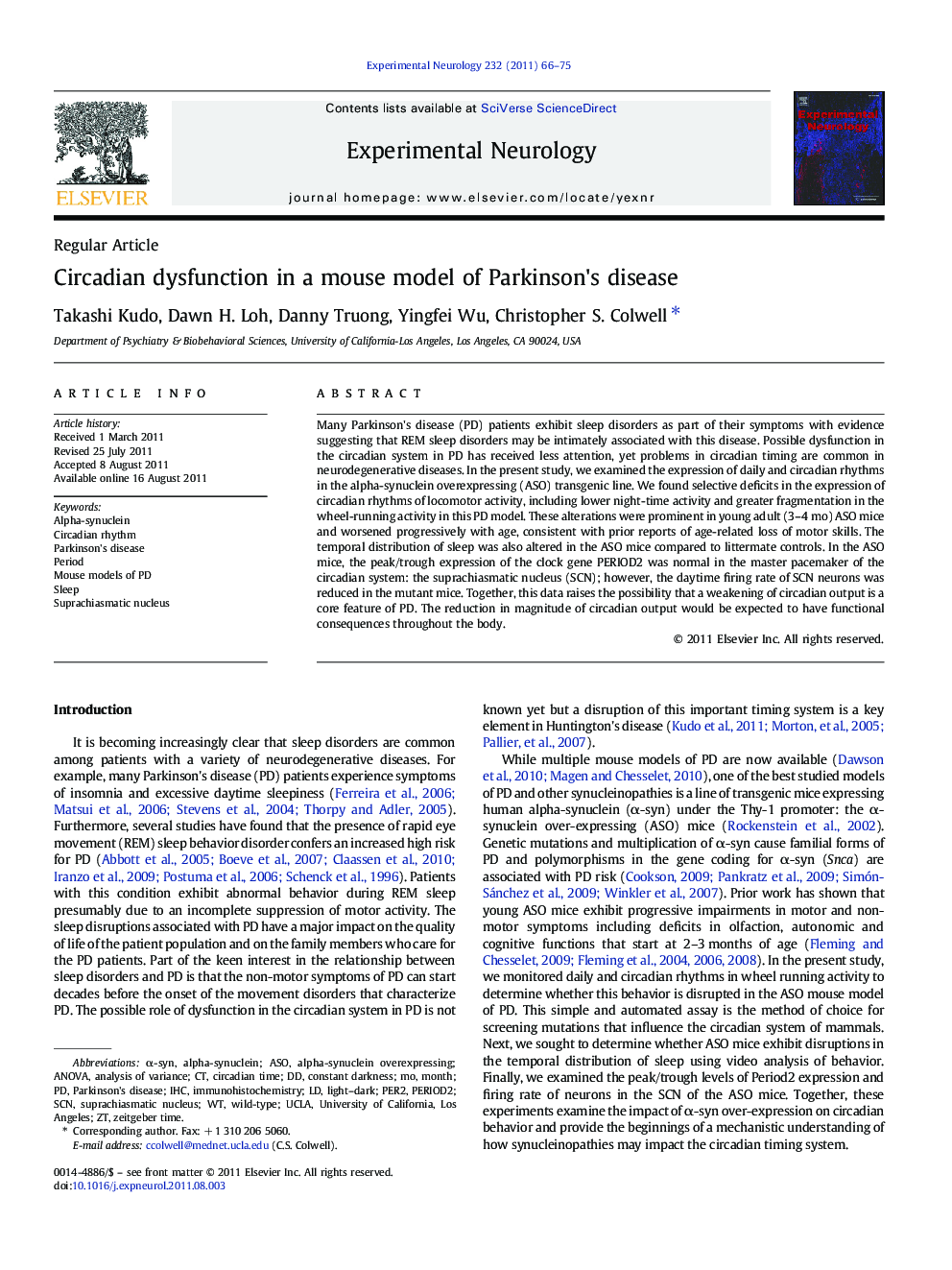| Article ID | Journal | Published Year | Pages | File Type |
|---|---|---|---|---|
| 3055708 | Experimental Neurology | 2011 | 10 Pages |
Many Parkinson's disease (PD) patients exhibit sleep disorders as part of their symptoms with evidence suggesting that REM sleep disorders may be intimately associated with this disease. Possible dysfunction in the circadian system in PD has received less attention, yet problems in circadian timing are common in neurodegenerative diseases. In the present study, we examined the expression of daily and circadian rhythms in the alpha-synuclein overexpressing (ASO) transgenic line. We found selective deficits in the expression of circadian rhythms of locomotor activity, including lower night-time activity and greater fragmentation in the wheel-running activity in this PD model. These alterations were prominent in young adult (3–4 mo) ASO mice and worsened progressively with age, consistent with prior reports of age-related loss of motor skills. The temporal distribution of sleep was also altered in the ASO mice compared to littermate controls. In the ASO mice, the peak/trough expression of the clock gene PERIOD2 was normal in the master pacemaker of the circadian system: the suprachiasmatic nucleus (SCN); however, the daytime firing rate of SCN neurons was reduced in the mutant mice. Together, this data raises the possibility that a weakening of circadian output is a core feature of PD. The reduction in magnitude of circadian output would be expected to have functional consequences throughout the body.
► Mouse model of Parkinson's disease (ASO) showed selective circadian deficits. ► The circadian deficits in the ASO mice declined progressively with age. ► Distribution of sleep was altered in this PD model. ► Firing rate of SCN neurons was reduced in the ASO mice. ► Expression of PERIOD2 within the SCN was not altered.
